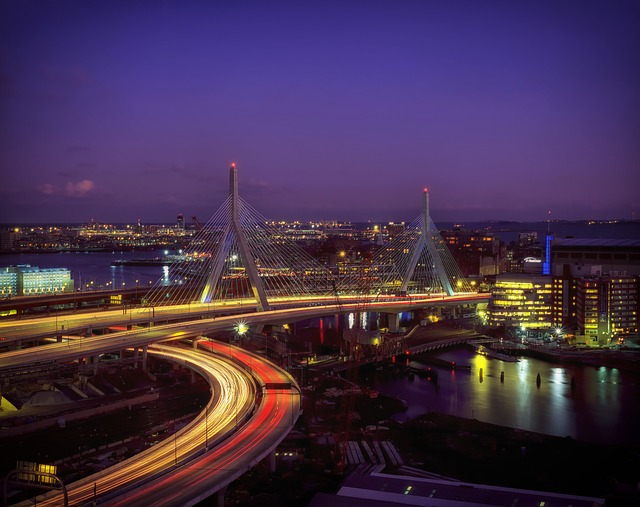
Massachusetts won’t meet its climate goals without getting people to drive less.
That’s the unpopular message from climate advocates and analysts who say the state’s recent Clean Energy and Climate Plan draft places too much emphasis on vehicle electrification and all but ignores the critical need to also reduce driving miles.
The number of vehicle miles traveled in the state is on pace to increase by 21% from 2010 to 2030, according to a new report from the Metropolitan Area Planning Council, the regional planning agency for greater Boston. This growth would cause emissions to rise unless all the vehicles in the state achieved an average — and unlikely — efficiency of 29 miles per gallon, the report concludes.
To alter this course, advocates say, state leaders will need to consider implementing congestion pricing, per-mile fees for road usage, or land use policies that make it easier and more attractive to use public transit — ideas that are not currently major parts of the climate plan.
“It leans on electrification of the vehicle fleet, which is obviously a critical pathway to pursue at the policy level,” said Conor Gately, senior land use and transportation analyst for the planning council. “There’s not as much enthusiasm for the land use side of things to reduce underlying demand.”
Massachusetts has set a goal of being carbon neutral by 2050. Transportation is responsible for more greenhouse gas emissions — 42% of the total — than any other sector in the state. And transportation emissions have remained roughly steady for more than a decade, even as sectors like electricity generation decarbonized significantly.
The state’s draft clean energy and climate plan for 2030, released at the end of December, aims to cut transportation emissions by about a quarter over the next 10 years. The plan identifies the adoption of electric passenger vehicles as the main strategy for reaching this goal. Clean energy and transportation advocates agree that going electric is perhaps the most important step the state can take toward cutting emissions.
At the same time however, reducing vehicle travel accounts for only about 10% of the plan’s anticipated carbon reductions from transportation. More should be done, said Chris Dempsey, director of nonprofit organization Transportation for Massachusetts. And so far, state leadership has not seemed dedicated to supporting alternatives to car travel, he said. Over the past 30 years, he noted, the state gas tax has only increased 14% — 3 cents per gallon — while fares on public transit have nearly tripled.
“The economic incentives we’ve been setting for people say, ‘Take the T less,’” Dempsey said, using the local shorthand for the state’s transit system.
Even as electric vehicles become more common, a region connected mainly by car travel will continue to have a range of problems, advocates said. Most notable is the Boston area’s traffic congestion, which is among the worst in the country and would not be alleviated by replacing gas-driven cars with electric ones. At the levels Boston experiences, congestion can limit residents’ job options and damage their mental health, said Jarred Johnson, executive director of Boston-based transit advocacy organization Transit Matters.
Furthermore, he noted, the high costs of parking in the city will still pose a financial challenge for many people, even with more electric cars on the road.
The planning council report considers several possible ways to keep vehicle travel down. The analysis found that the largest impact on miles traveled would come from imposing a per-mile fee of 25 cents, which could reduce total travel by 15%. Congestion pricing has a similar though slightly smaller effect, according to the modeling.
More important, the report suggests, is focusing on so-called “smart growth” policies — an approach to development that encourages more walkable, mixed-use communities — in conjunction with strengthening public transit options. These principles could help create communities in which residents are less car-dependent, making it easier to run errands or even commute without using a private car.
“That is a huge piece missing from the state’s strategy: getting more people on public transit, bettering our bus service, particularly out in suburban areas,” Johnson said.
Any plans to lower vehicle travel, however, must be made with racial and economic equity kept firmly in mind, advocates said. A per-mile fee, especially at the levels suggested in the planning council report, could quickly become onerous for lower-income drivers, and congestion pricing could be problematic for lower-wage commuters who have little choice where and when they drive.
Planners therefore must think about how to target any fees so that burdens do not fall on those who can least afford it, activists argue. For example, higher tolls on the heavily traveled Tobin Bridge could be used to offset the price of bus travel, Dempsey said.
“In a world where we are more effectively pricing our roads,” he said, “then we generate a revenue stream that can be used to provide much better options for people, including people who can’t afford a vehicle.”
This article was first published by the Energy News Network and was reprinted with permission.




